Cherry Ng -- Radio Astronomer
cherry.ng-guiheneuf@cnrs-orleans.fr
linkedin.com/in/cherry-ng


Breakthrough Listen |
.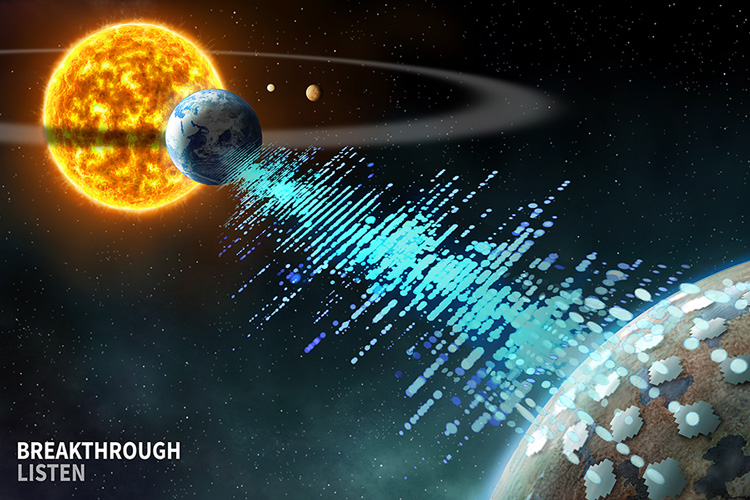 |
| Breakthrough Listen is a 10-year, $100-million initiative that aims to search for evidence of extraterrestrial intelligence (SETI). I work with the BL team and am jointly affiliated with the SETI Institute. My main role as a project scientist is to commission interferometric SETI searches on the MeerKAT telescope in South Africa and the Very Large Array (VLA) in the U.S. |
CHIME |
.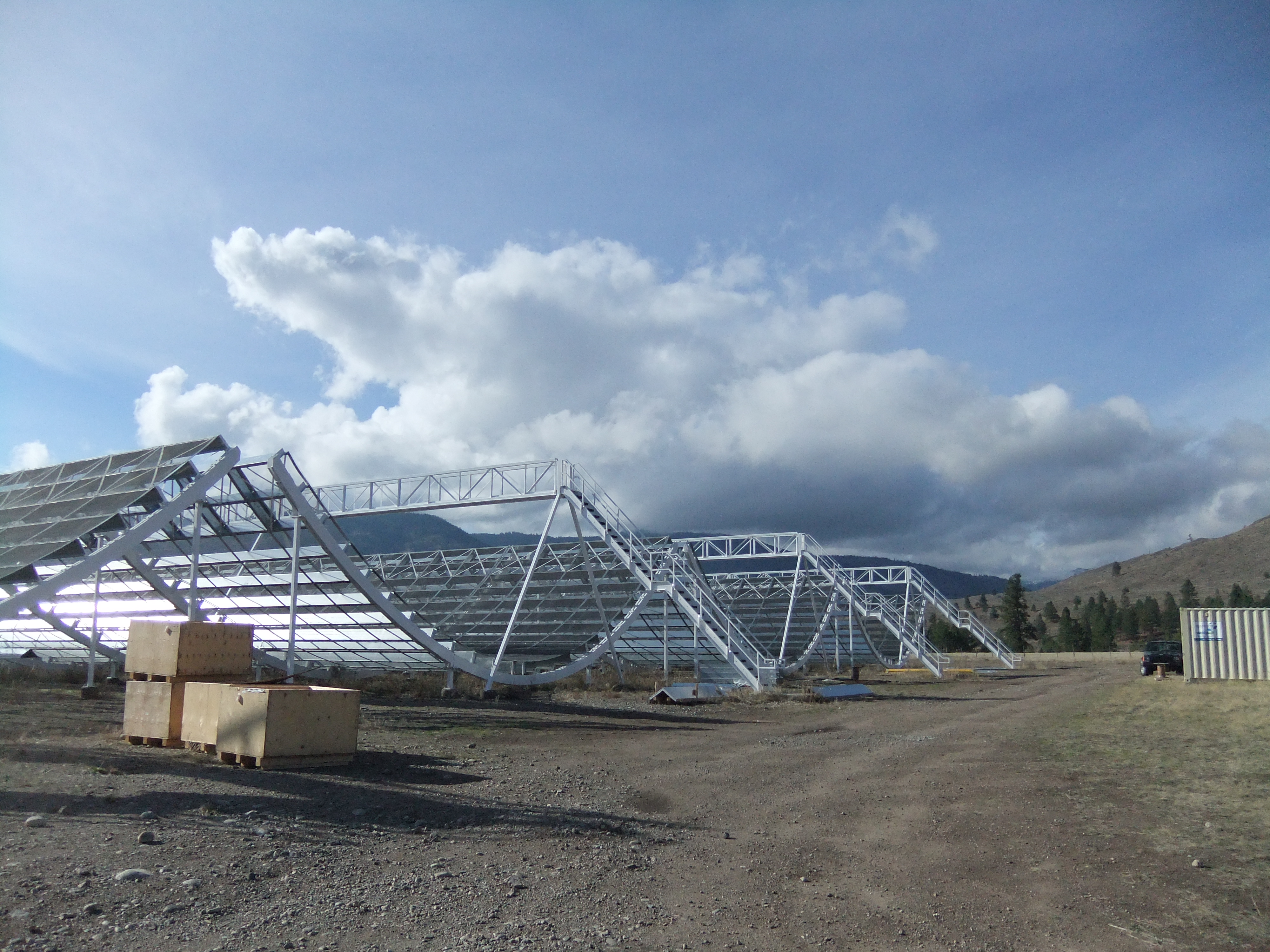 |
| CHIME is a recently commissioned radio telescope in British Columbia, Canada. Its innovative design consists of 4 half-pipe-like cylinders placed side by side, spanning a huge collecting area equivalent of 5 hockey arenas. I use CHIME to detect Fast Radio Bursts (FRBs) and study pulsars. I work with the LW lab on the deployment of the CHIME correlator and signal processing algorithms in high performance computing on GPU. |
NANOGrav |
Image credit: David Champion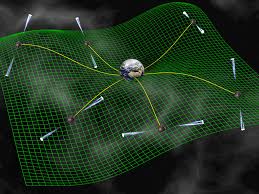 |
| NANOGrav is the North American Pulsar timing array collaboration that aims to detect Gravitational Waves (GWs) through the monitoring of an ensemble of millisecond pulsars. I work on high precision pulsar timing analysis, in order to maximize NANOGrav's sensitivity towards GW detections. |
HTRU |
.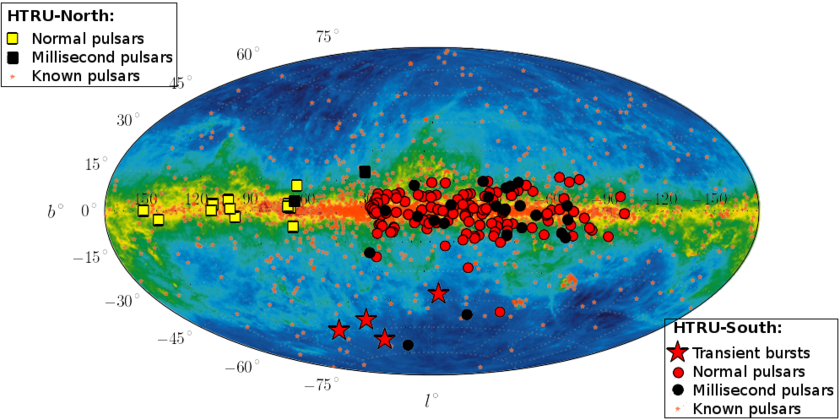 |
| Using the Parkes Radio telescope in Australia, we conducted the High Time Resolution Universe (HTRU) survey, an all-sky blind search for new pulsars. I have personally discovered 60 pulsars which at the time equated to 2.5% of the entire known population. |
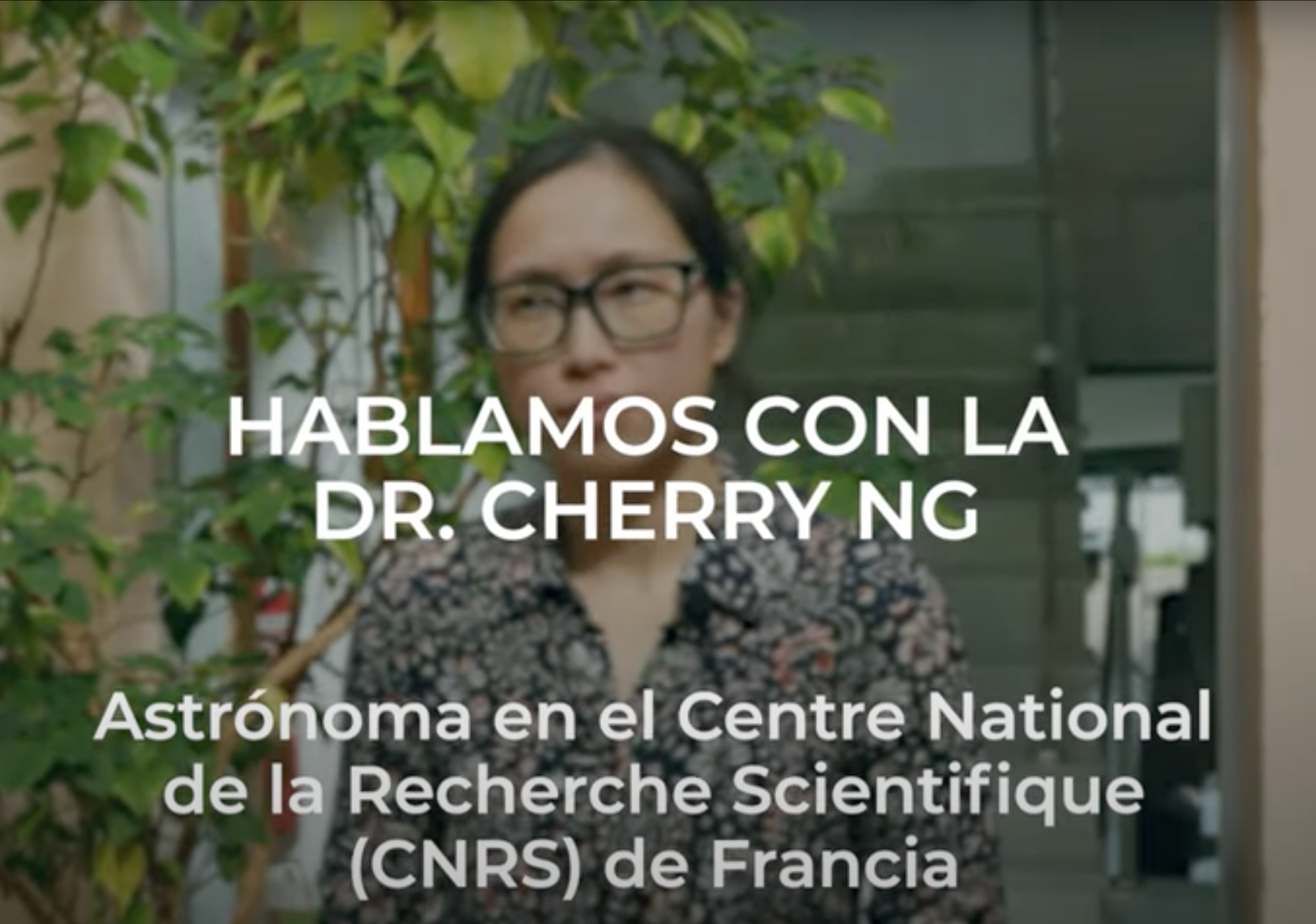 A YouTube interview by the IAA-CSIC in Granada, Spain, on my role as the SKA Cradle of Life Science Working Group co-chair.
A YouTube interview by the IAA-CSIC in Granada, Spain, on my role as the SKA Cradle of Life Science Working Group co-chair.
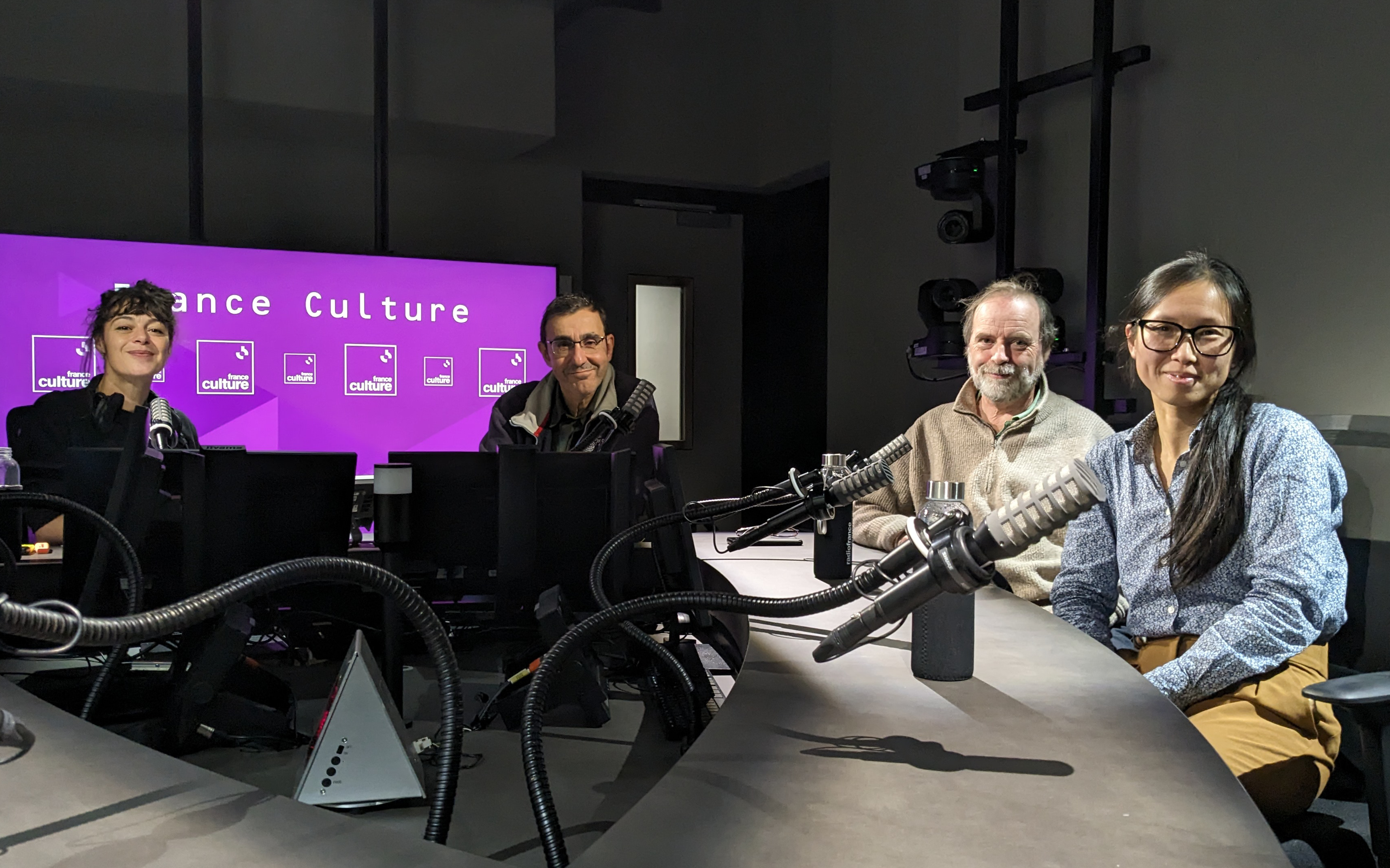 I was interviewed by Radio France to talk about Fast Radio Burst in the CQFD show (Nov, 2023). Listen to the podcast (in French) here.
I was interviewed by Radio France to talk about Fast Radio Burst in the CQFD show (Nov, 2023). Listen to the podcast (in French) here.
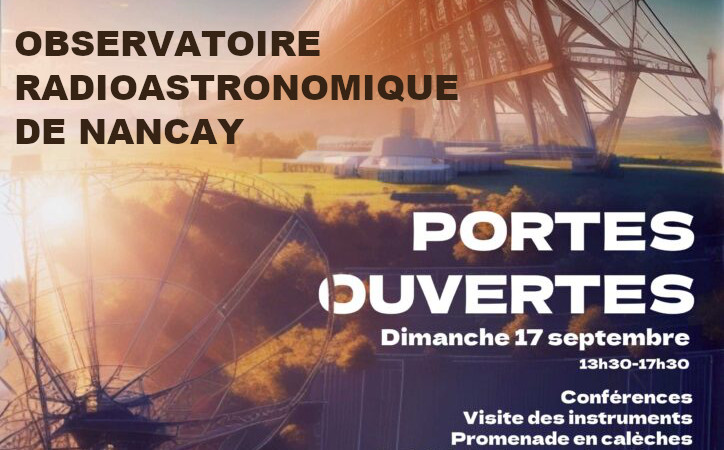 I gave a public talk at the European Heritage Open Door Day 2023 at the Nançay Radio Observatory on the topic of pulsar timing array.
I gave a public talk at the European Heritage Open Door Day 2023 at the Nançay Radio Observatory on the topic of pulsar timing array.
 Honoured to be named one of the "rising stars in Astronomy" by the magazine "Astronomy". Read the article here.
Honoured to be named one of the "rising stars in Astronomy" by the magazine "Astronomy". Read the article here.
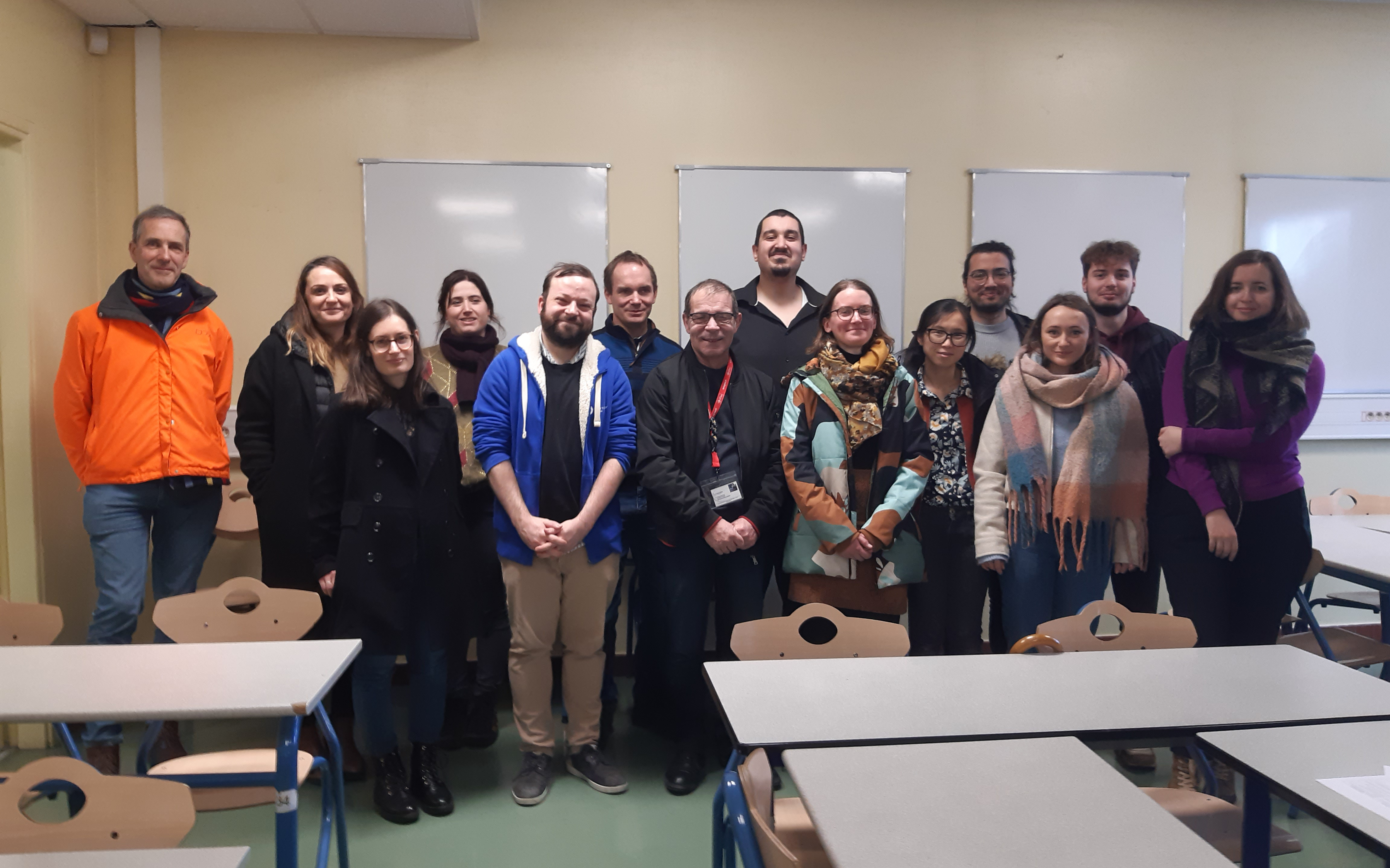 Participation at the DECLICS event where we went on "speed meetings" with the students at the Jean Zay High School in Orléans to share what is it like to be a researcher.
Participation at the DECLICS event where we went on "speed meetings" with the students at the Jean Zay High School in Orléans to share what is it like to be a researcher.
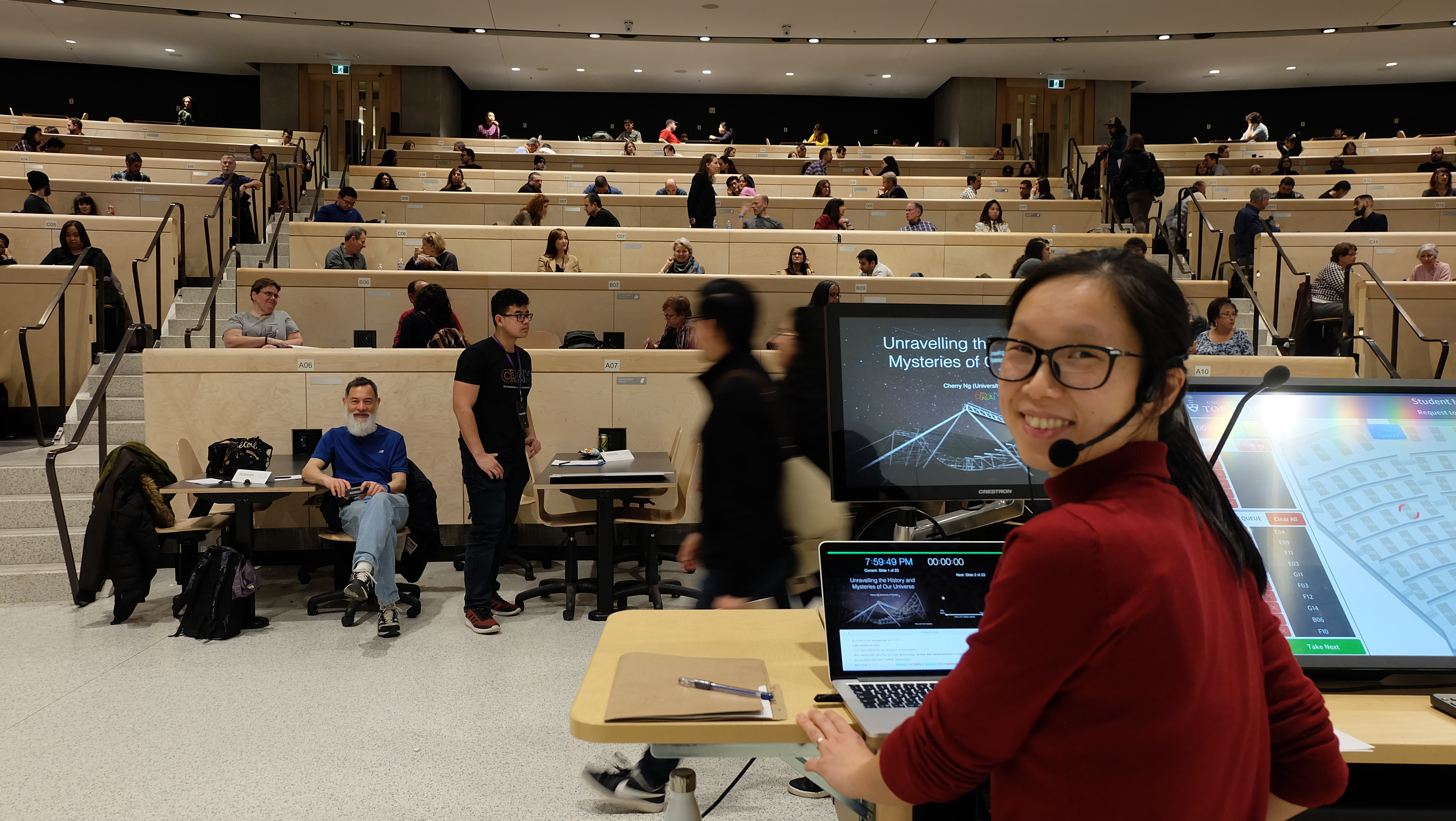 The CRAM science festival (April 5, 2019): I was invited to talk about how we study the expansion of our Universe and hunt for mysterious Fast Radio Bursts with the CHIME telescope.
The CRAM science festival (April 5, 2019): I was invited to talk about how we study the expansion of our Universe and hunt for mysterious Fast Radio Bursts with the CHIME telescope.
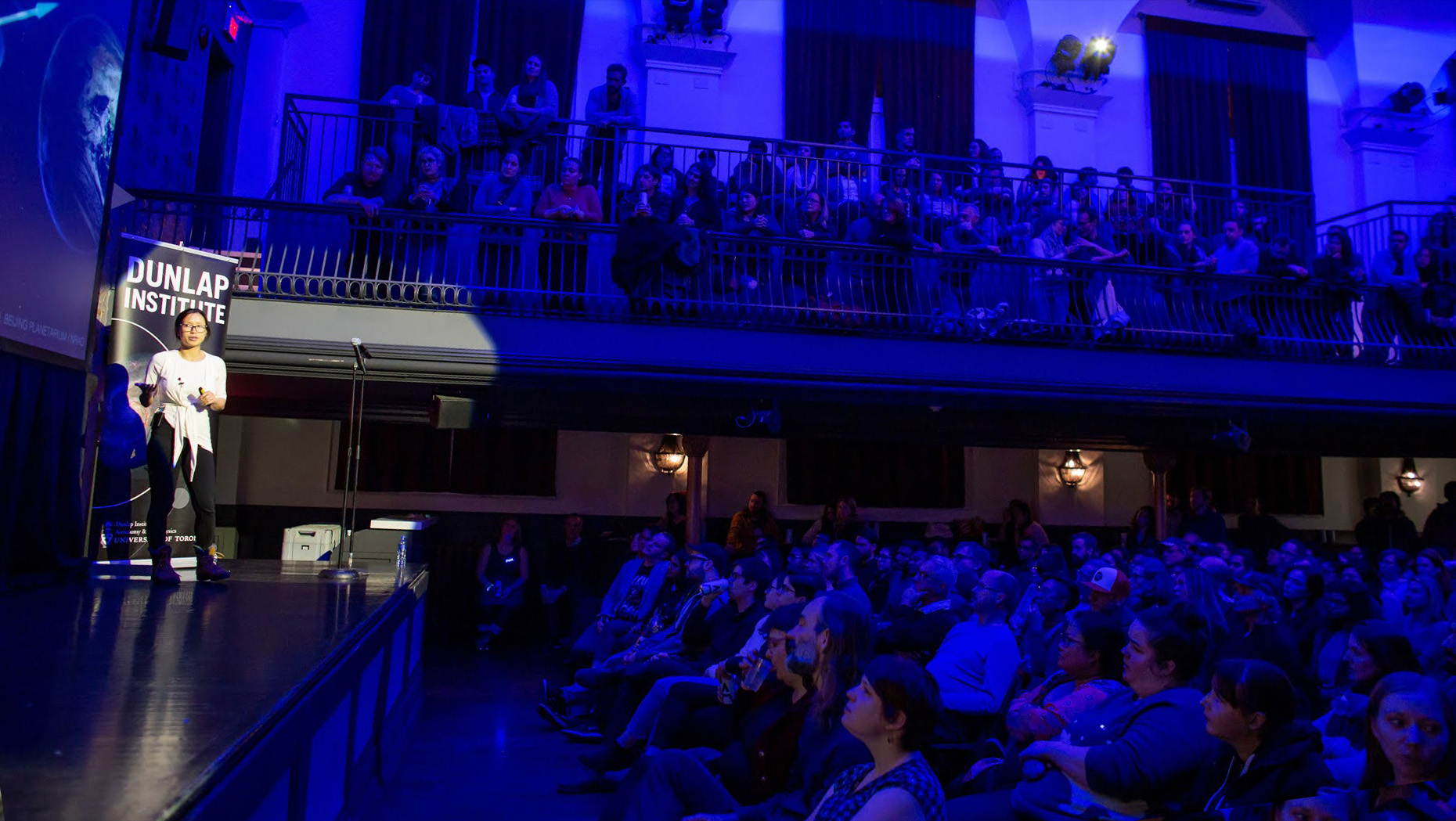 The hugely popular Astro on Tap T.O. (Nov 22, 2019): telling an audience of 500 about how CHIME unravel the mystery of Fast Radio Bursts.
The hugely popular Astro on Tap T.O. (Nov 22, 2019): telling an audience of 500 about how CHIME unravel the mystery of Fast Radio Bursts.
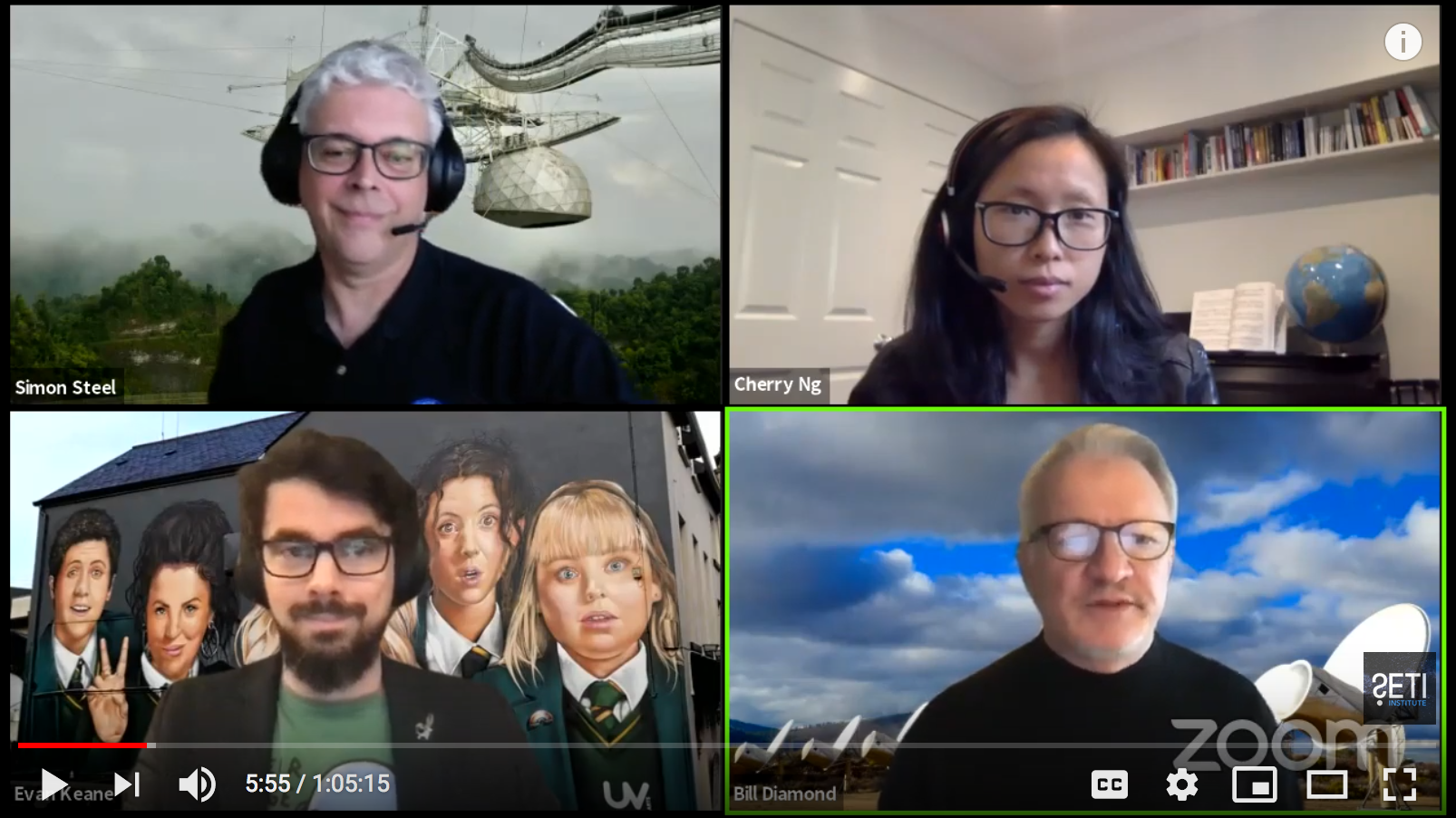 SETI Institute panel discussion (Oct 22, 2020) on single dish vs array telescopes. You can re-watch it on this YouTube link.
SETI Institute panel discussion (Oct 22, 2020) on single dish vs array telescopes. You can re-watch it on this YouTube link.
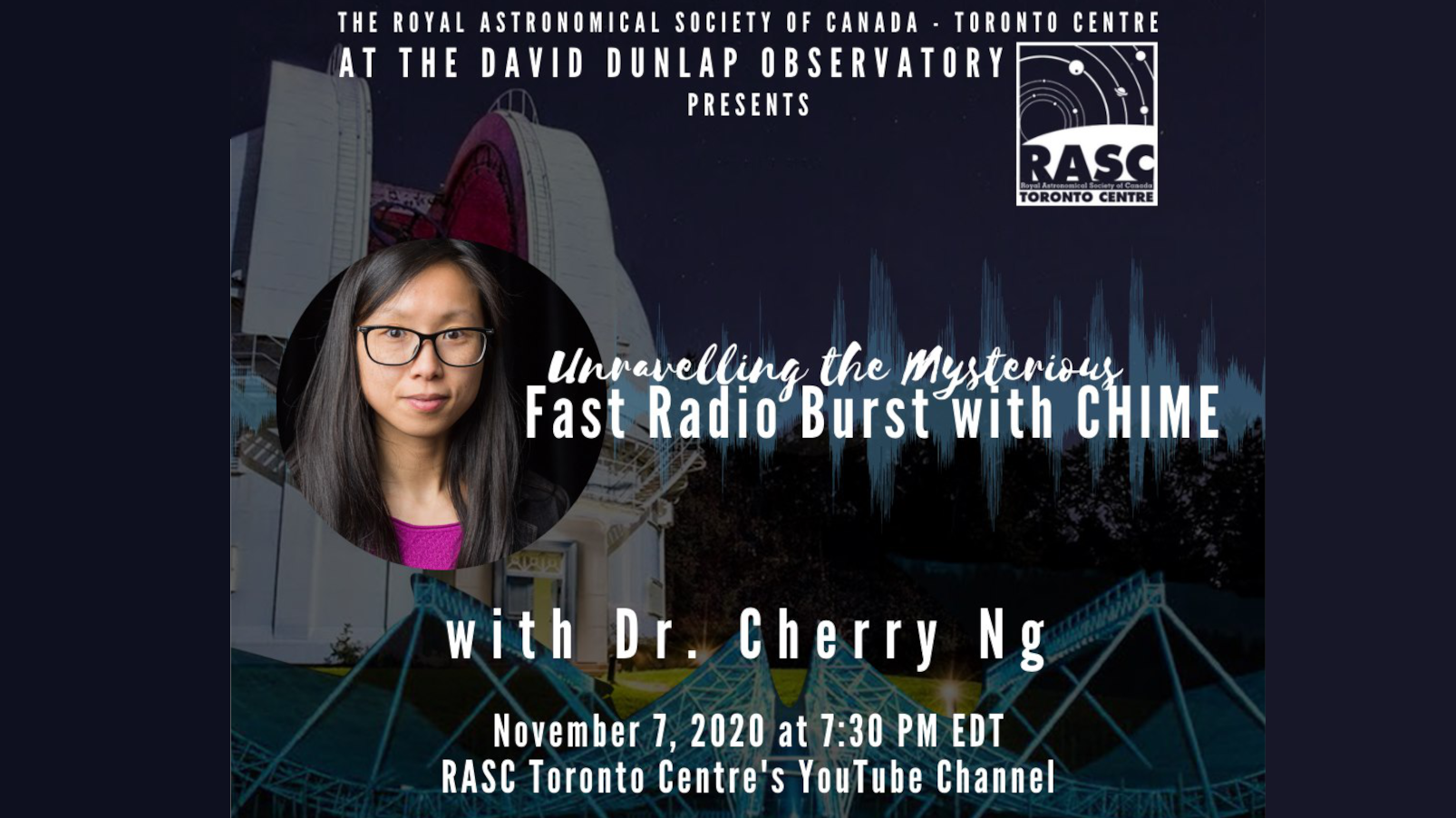 Public talk at the David Dunlap Observatory (Nov 7, 2020) on Fast Radio Burst discoveries with the CHIME telescope (YouTube link).
Public talk at the David Dunlap Observatory (Nov 7, 2020) on Fast Radio Burst discoveries with the CHIME telescope (YouTube link).
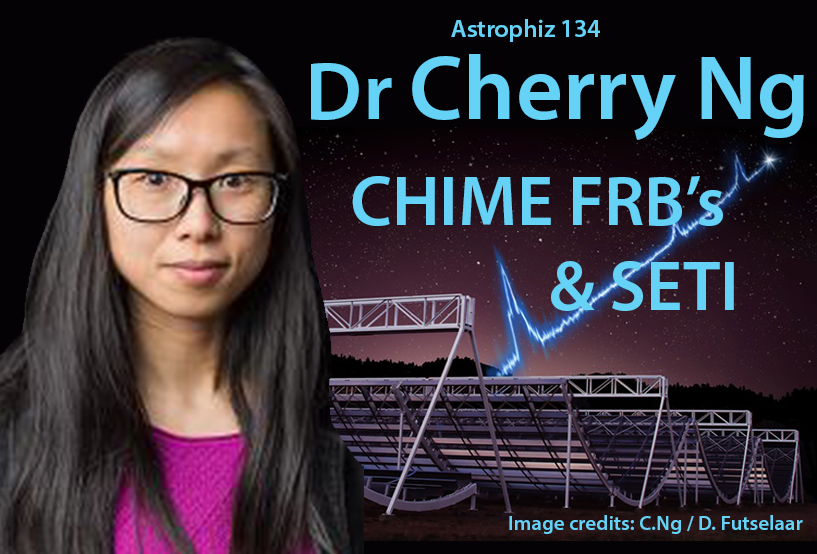 Featured by the Australian podcast Astrophiz hosted by Brendan O'Brien. Listen to it here.
Featured by the Australian podcast Astrophiz hosted by Brendan O'Brien. Listen to it here.
| 2023–now | Staff researcher (Chargé de recherche) - Laboratoire de Physique et Chimie de l’Environnement et de l’Espace (LPC2E), Centre national de la recherche scientifique (CNRS) |
| 2021–2023 | Project Scientist – Dunlap Institute for Astronomy & Astrophysics, University of Toronto (U of T), Canada and jointly at the SETI Institute and the UC Berkeley SETI Research Center, USA |
| 2017–2021 | SOSCIP TalentEdge Fellow – Dunlap Institute for Astronomy & Astrophysics, University of Toronto (U of T), Canada |
| 2015–17 | Post-doctoral position – The University of British Columbia (UBC), Canada |
| 2010–15 | PhD Student – Max-Planck-Institut für Radioastronomie (MPIfR), Germany |
| Summer 2009 | Pre-graduate trainee – European Space Astronomy Centre, Spain |
| Summer 2008 | Research Assistant – University of London Observatory, UK |
| 2010–15 | PhD in Astronomy – Max-Planck-Institut für Radioastronomie (MPIfR), Germany |
| 2006–10 | MSci Natural Sciences (Astrophysics major) – University College London (UCL), UK |
| 2023 onwards | Council member of the Action Spécifique SKA-LOFAR |
| 2023-2026 | Science & Engineering Advisory Committee for the SKA observatory |
| 2023-2024 | Exercice de prospective des moyens en Astronomie Committee |
| 2022-2024 | Square Kilometre Array (SKA) Cradle of Life Working Group co-chair |
| 2022-2026 | National Radio Astronomy Observatory (NRAO) User Committee |
| 2022-2025 | ngVLA Science Advisory Council Committee | 2021 | NRAO Program Review Panel FY2021 | 2020-2022 | Murchison Widefield Array (MWA) Time Assignment Committee | 2021-2023 | NRAO Telescope Proposal Science Review Panel | 2021 | Dunlap Instrumentation Summer School Planning Committee |
| 2022 | Vector Institute – Mothers and Machine Learning Scholarship |
| 2021 | ngVLA Community study award |
| 2017-2020 | SOSCIP TalentEdge Fellowship |
| 2016-17 | University of Toronto – Dunlap Visitor Funding |
| 2006-10 | UCL Undergraduate Pathfinder Scholarship |
| 2009-10 | UCL Old Students’ Trust |
| 2008-09 | UCL Alumni Scholarships |
| 2006-08 | UCL Departmental ‘Sessional Prize’ |
| 2022 | Astronomy magazine – rising star in Astronomy |
| 2019 | Dunlap Institute “Dundies award” – media superstar |
| 2017 | URSI Young Scientist Award |
| 2015 | 3-minute UBC Postdoc Slam - 2nd prize and the "People's choice" prize |
| 2014 | Best poster award, WE-Heraeus seminar |
| 2010-15 | 5.2 million CPU hours on the CAASTRO computer cluster |
| 2010-19 | 303 telescope hours on the Parkes telescope (PI for project P630, P860) |
| 2010 | Dean’s List Academic Award – UCL Faculty of Mathematical and Physical Sciences |
| Programming | C++, C, OpenCL, python, shell |
| Pulsar tools | Sigproc, Presto, Psrchive, Tempo(2) |
| OS | macOS, Windows, Linux |
| Others | Latex, GIMP, Wiki, EXCEL, d3, HTML, CSS |
| Cantonese | Native |
| English | Fluent |
| Mandarin | Fluent |
| French | Intermediate |
| German | Beginner |
| Spanish | Beginner |